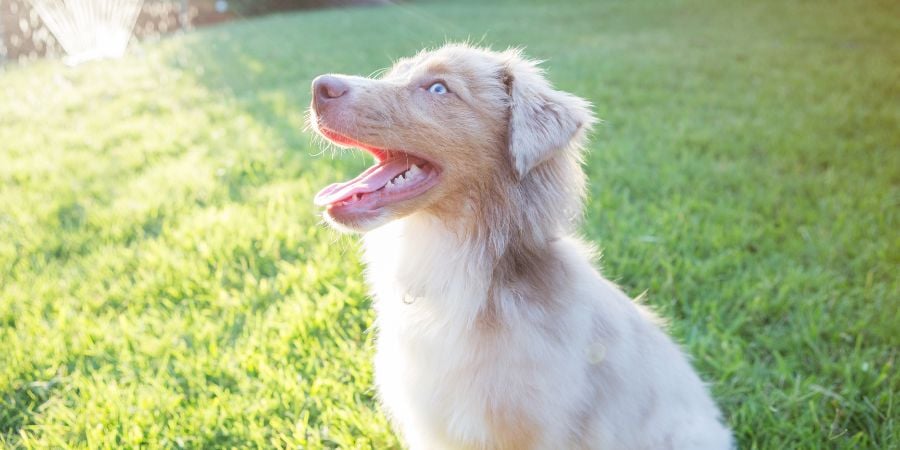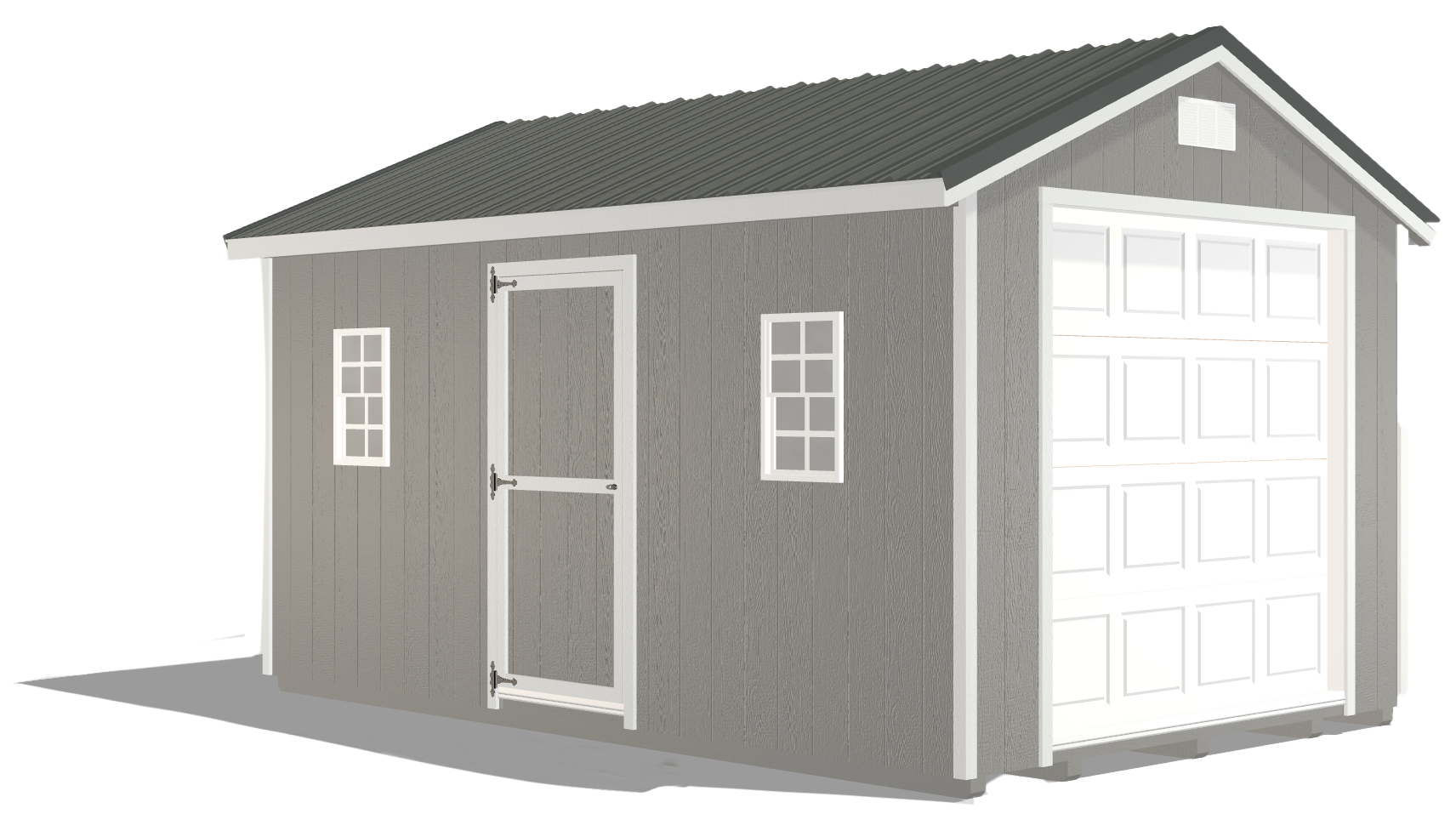Master Crate Training: Unlock Potential for a Well-behaved, Happy Dog
by Dakota Storage Buildings, on September 11, 2023
.jpg?width=900&height=450&name=Untitled%20design%20(81).jpg)
Crate training can be a controversial subject. Many people associate it with being cruel or mean, believing it confines their beloved pet in an unpleasant space. However, this could not be further from the truth. When implemented correctly, crate training transforms an ordinary large dog kennel into a comfortable, relaxing sanctuary for your canine friend and a place they will look forward to retreating to. We want to discuss the immense benefits of crate training, tips for selecting the right crate, and how to introduce your working dog to its new abode.
The Extensive Benefits of Crate Training
Crate training your dog opens up a world of benefits for both you and your furry friend. Crate training provides a sense of ownership and security to your dog. Dogs, much like humans, value their personal space. A large dog kennel, when properly introduced, can become their safe haven, a retreat from the hustle and bustle of daily life. This personal space can significantly reduce anxiety, offering your pet a place to comfortably relax and rejuvenate.
Crate training is also an incredibly effective tool for housebreaking or potty training. Dogs are not instinctive to soil where they sleep or eat, and a crate uses this to its advantage. By associating the crate with their living space, dogs become more inclined to control their bowel and bladder movements, fostering cleaner habits. Remember, a crate is a training tool, not a substitute for regular walks and bathroom breaks.
Sometimes, leaving your dog unsupervised is unavoidable, like heading to work or running errands. During such times, a crate can ensure your dog stays out of trouble, preventing them from chewing on furniture, electrical cords, or other hazardous items. A crate can also serve as an essential recovery zone if your dog becomes ill or injured. A familiar, comfortable space can reduce stress and promote healing. Veterinarians often recommend crate rest for dogs recovering from surgery or injury, as it limits their movement and prevents them from exacerbating their condition.
Picking the Perfect Crate
Choosing the right crate is essential for successful crate training. The decision should consider your dog's size, breed, and temperament, as well as the crate's purpose and your living circumstances. The market offers various types of crates, each with its own set of advantages.
Outdoor Kennels: Outdoor kennels, or dog runs, provide a secure outdoor space where your dog can move more freely. They can be a good choice for working or protection dogs that need a mix of indoor and outdoor living or when you need to keep your dog safely contained while outdoors.
Hard Plastic Crates: These crates are sturdy and durable, offering your dog a sense of security and privacy due to their enclosed design. They are also the preferred choice for air travel, meeting most airlines' safety requirements.
Wire Crates: Wire crates are well-ventilated and often collapsible, making them ideal for home use and travel. They provide good visibility for your dog, but you can also drape a blanket over the crate to create a darker, more den-like space.
The size of the crate is another crucial factor. A well-sized crate is large enough for your dog to stand up, turn around, and lie comfortably. However, it should not be so big that your dog can use one end as a bathroom and the other as a sleeping area. The crate should encourage your dog's instinct to keep its living space clean. To choose the right crate size, measure your dog from the tip of its nose to the base of its tail and from the top of its head to the ground when sitting. The crate should be a few inches larger in both dimensions.

Implementing Crate Training: A Step-by-step Approach
Implementing crate training requires patience, consistency, and a gradual approach. Following these steps, you can help your canine friend transition smoothly into their new space, turning the large dog kennel into a comfortable, inviting sanctuary.
Step 1: Introduce the Crate
The first step in crate training is positively introducing the crate. Place the crate in an area where your family spends a lot of time, such as the living room, and leave the door open. Allow your dog to explore the crate at their own pace. Never force them into the crate as it could create fear or anxiety.
Step 2: Make the Crate Comfortable
Ensuring the crate is comfortable will help your dog view it as a desirable resting place. Place a soft blanket or a dog bed inside. You can even try placing your dog's favorite toys or treats inside the crate to make it more enjoyable.
Step 3: Gradually Increase Crate Time
Once your dog is comfortable entering the crate voluntarily, gradually increase the time they spend inside. Do not shut the door at first so they do not feel trapped. Once your dog is comfortable in the crate, your dog will start to understand that the crate is a safe place to rest and relax. You can latch the door when they retreat to their crate to relax or nap.
Step 4: Develop a "Crate" Command
Once your dog has adjusted to their new crate life, it's time to establish a clear crate command. Whether it's "crate," "kennel," or "bed," consistency is key. Use the chosen command whenever you want your dog to go to their crate, and always reward them for following it.
By following this gradual, step-by-step approach, you can make crate training a positive experience for your dog. Remember, every dog is unique, and some may take longer to adjust than others.
Upgrading to a Larger Living Space
Once your dog has become comfortable with their crate and responds positively to crate-related commands, the next step in its journey may be transitioning to larger living quarters, such as an outdoor kennel. This exciting progression offers your dog more space to explore, stretch their legs, and satisfy their curiosity while maintaining the safety, security, and comfort their crate training has successfully instilled.
This transition does not merely represent a spatial increase; it is an opportunity for your dog to enjoy a more dynamic and engaging environment. An outdoor kennel allows your dog to revel in nature's sights, sounds, and smells, stimulating their senses and adding variety to their daily routine. They can bask in the sun, play, or simply observe their surroundings, all within a protected space.
A well-furnished and thoughtfully designed outdoor kennel can be an excellent retreat for your working dog after a bustling activity day. Here, they can unwind, recharge, and enjoy their downtime while remaining secure and content. You might furnish the kennel with a comfortable bed, weather-protected toys, and freshwater to make the space as welcoming as possible.
The Power of Positive Crate Training
Crate training is not cruel; it is a fantastic tool to train your dog and provide them with a comforting space. By associating this secure space with positive experiences, your dog will view their crate as a refuge where they can retreat for a nap, chew on a favorite toy, or simply have some valuable downtime away from the hustle and bustle of the household. These tips will help your dog associate their large dog kennel with positivity and relaxation. Download our high-quality kennel guide to better understand different kennel options and find the best fit for your dog.

























